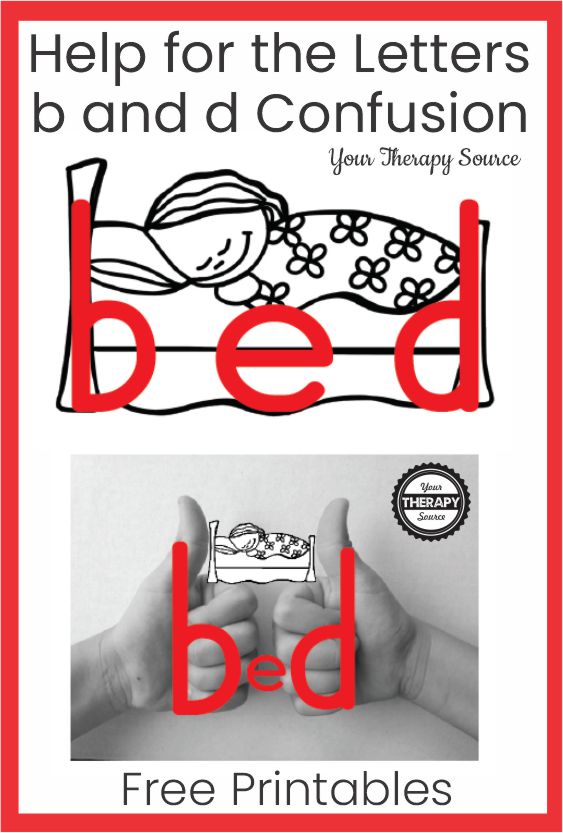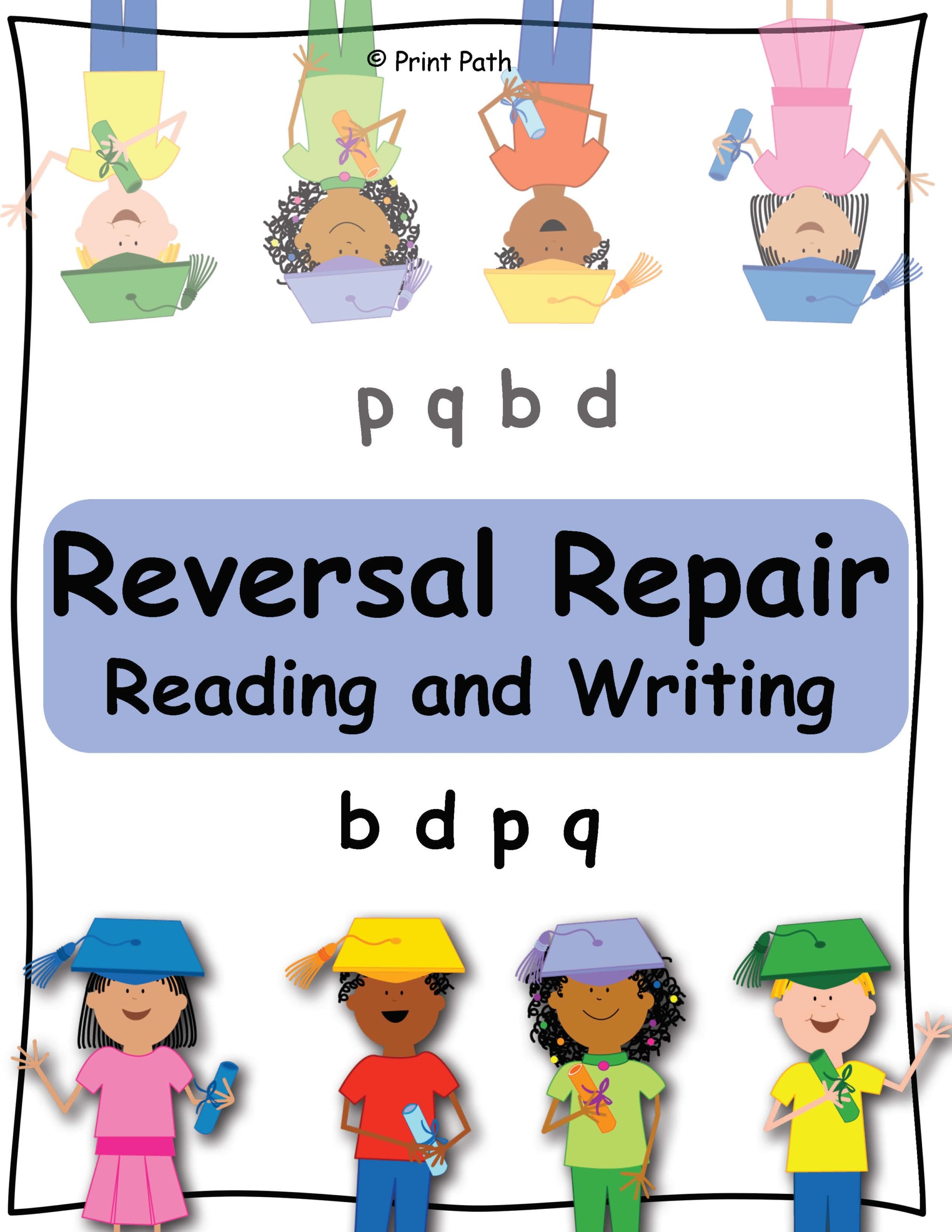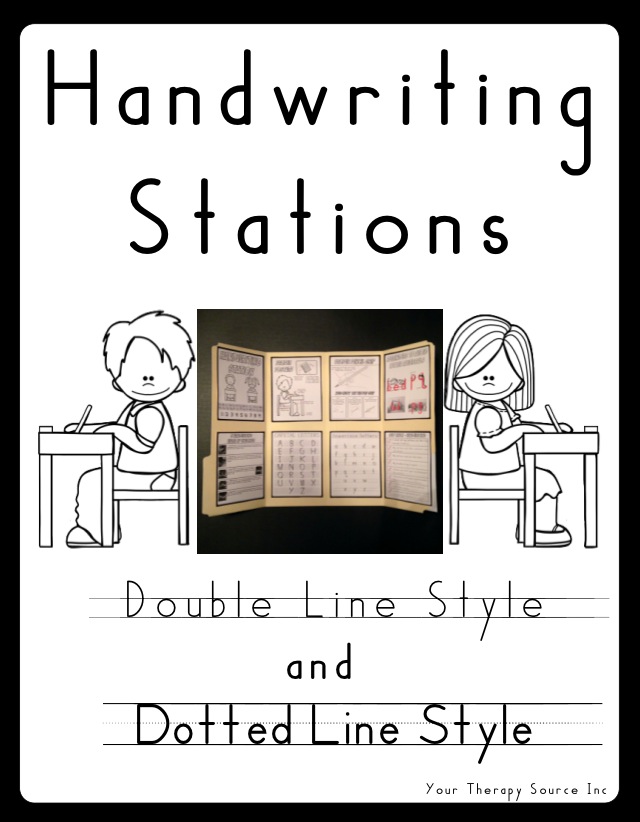Letter Reversals
Are your students struggling to form letters correctly? One possibility is an issue with letter reversals. Letter reversals can be a difficult problem to correct, but with some simple strategies, you can help your students learn to write the letters correctly. Read more about what letter reversals are, the causes and symptoms of this problem, and how you can help your student improve.
You can also download some FREE letter reversal worksheets at the bottom of the page.

What are letter reversals?
Letter reversals are when letters are written backward or upside down. Number reversals can also occur. This can be seen in both letters that are formed like b and d, as well as letters that should connect to another letter, like n.
Your students may write letters or numbers backward (sometimes called mirror writing). This is different from transposing letters in the wrong order (switching around how certain letters appear on paper).
For students with letter confusion, some of the most common letters are b, d, q, p, and the numbers 9,5 and 7. Letters that have loops or curves on the left side are more likely to be reversed than letters made of angles.
There are some letters that you can not write backward since they are symmetrical. The symmetrical letters are letters that can be flipped horizontally and still look the exact same. For example, capital letters with horizontal symmetry are A, H, I, M, O, T, U, V, W, X, Y.
When are Letter Reversals Developmentally Appropriate?
There are children who will begin letter reversals as early as age 3, but they should be a thing of the past by around age 7 or 8. This means that letter reversal should disappear from letter formation from first to second grade.
Some letters or numbers are more likely to be reversed than others, particularly those such as ‘3’ or ‘J’ in which the correct form faces to the left (Fisher, 2011). Other examples of letters and numbers that face to the left are d, g, j, q, 4,7, and 9.
What Causes Letter Reversals?
There are some causes of letter reversals that can be corrected. For example, if students hold their pencil incorrectly at the beginning of letter formation (with the thumb under the pencil). Students who hold their pencil like this may start letter formations upside down or on the side.
Letter reversals can also be caused by a variety of neurological conditions, like dyslexia, working memory deficits, visual memory issues, visual discrimination difficulties, auditory processing delays, visual processing disorders, etc.
If you are concerned about your student’s or child’s letter formation, consult with your pediatrician or Occupational Therapist to have the child evaluated.

Reversing Reversals
Are Reversals Part of Dyslexia?
Dyslexia is a language-based condition, while letter reversals can happen due to other conditions such as difficulty with letter recognition or visual issues. Not all dyslexics will struggle with letter reversals or mirror writing.
If letter reversals appear in reading and writing, it may be that the reversals are caused by a letter formation issue rather than dyslexia.
Are Reversals Part of ADHD?
One large study in children who possibly had ADHD, the researchers found that letter reversals were still present in 40.8% of the 3 to 6 year olds, 42.9% of the 7-8-year-olds and 16.3% of the 9-11-year-olds. The age of letter reversal continuation was significantly associated with reaction time variability for male and female children (Levy & Young, 2016).
What are the Symptoms of Letter Reversals?
If letter reversals happen frequently enough that they become a habit, it can be difficult to correct. There may also be problems with letter formations used across subjects (such as in math), which can indicate letter reversal as a developmentally inappropriate letter formation.
Signs your students struggle with letter reversals may include difficulty with letter recognition, handwriting problems, misspelling, math errors, or mixing up letter sounds in words.
How to Fix Letter Reversals?
What can you do to help your students who have difficulty with letter formation? To start with, the first step should be trying to determine why the student continues to have letter reversals by talking with your pediatrician, teachers, or Occupational Therapist.
There are a few strategies that you can implement with your students to help them correct letter reversals.
1. Teach letter formation correctly from the beginning. This means that letter formations must be taught to students letter by letter in the correct direction. Provide direct instruction for the sequence of letter strokes.
2. Work on letter formation in letter strings with words that have mostly mid-high frequency letters. This means spending most of your time focusing on letter formations that are more likely to be reversed, or letter combinations that are difficult for students or are higher frequency (such as letter combinations that include letter ‘d’ or letter ‘b’).
3. Have students practice letter formations in sentences for more functional letter formation skills.
4. Use visual or verbal cues to help your students remember letter formations correctly. For example, the letter b is the top of the bed and the letter d is the bottom.

5. Provide letter flashcards as a visual cue to help your students remember letter formations correctly.
6. Offer a multi-sensory approach when learning proper letter formation. For example, use multi-sensory materials and try these sensory approaches:
- air writing the letters with your hands.
- draw huge letters on the sidewalk and the kids can walk on them.
- write letters on a slate chalkboard.
- practice writing the letters in a tray filled with sand.
- draw letters in shaving cream.
7. Repetition is key. Students will need lots of practice time to develop new habits.
8. Provide resources such as posters with the proper formation of letters on the classroom wall for your students to refer to when writing.
9. When writing letters on the whiteboard, model the letter formation correctly and often to help create good habits in your students.
10. Use consistent verbal cues when teaching letter formation. For example, for the letter b, “straight line down, circle around”.

Reversal Repair – Multisensory Intervention for Letter Reversals
Level Reversal Worksheets for Occupational Therapy and More
Reversal Repair is a multisensory intervention that includes twelve sequenced research-based activities to help students with persistent letter reversals. This program builds automaticity of oral, phonological, and written use of these frequently confused letters. Reversal Repair was created By Thia Triggs, school based OT and is a 55 page PDF digital document.
Reversing Reversals is a digital download that includes fun activities that build sequencing, visual discrimination, and visual tracking skills to help children improve processing and reading skills.
Great for younger kids, the Fixing Letter Reversals with Beach and Ocean Theme includes the information to activate Boom Cards for interactive lessons to practice letter identification.
If your students struggle with the letter b and d, try this freebie for practice with visual discrimination skills.
References:
Fischer, J-P. (2011). Mirror writing of digits and (capital) letters in the typically developing child. Cortex, 47, 759–762.
Levy, F., & Young, D. (2016). Letter Reversals, Default Mode, and Childhood ADHD. Journal of attention disorders, 1087054715624229.
RELATED POSTS ON LETTER REVERSALS
Letter Bb printables – review and reinforce proper letter formation for the letter Bb with this free Letter Bb printables packet.





